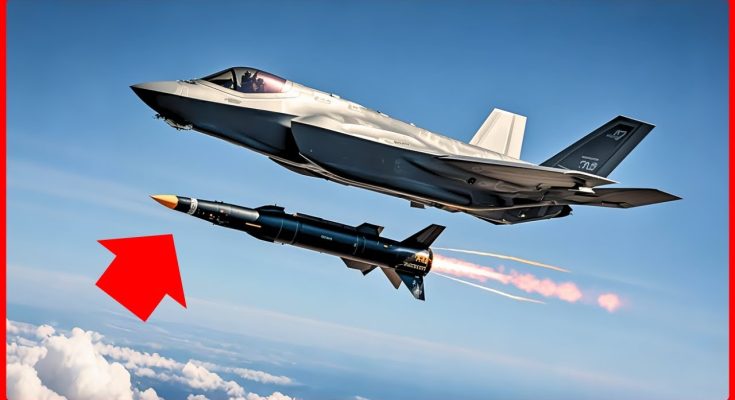The F-35 Lightning II, a fifth-generation multirole stealth fighter, is already one of the most advanced aircraft in the world, known for its versatility, advanced avionics, and ability to conduct precision strikes in contested airspaces. But its recent upgrade with hypersonic missile capabilities could take its lethality and effectiveness to unprecedented levels, making it nearly unstoppable in modern warfare. This integration of hypersonic weapons could fundamentally alter the strategic balance of air combat.
The Hypersonic Edge
Hypersonic missiles are defined as those that travel at speeds greater than Mach 5—five times the speed of sound—allowing them to cover vast distances in a fraction of the time compared to conventional weapons. This speed, coupled with maneuverability and the ability to fly at altitudes where traditional interceptors and defenses are less effective, makes hypersonic weapons extremely difficult to defend against.
The F-35’s new hypersonic missile upgrade enhances its already impressive capabilities, allowing it to launch these fast-moving, highly maneuverable missiles at targets at ranges that were previously unimaginable. Traditional missiles rely on predictable flight paths and can often be intercepted or evaded. Hypersonic missiles, however, are far more unpredictable due to their speed and flight characteristics, significantly increasing the challenge for enemy defenses.
The Upgrade: Hypersonic Missiles for the F-35
In recent years, there have been multiple efforts to integrate hypersonic capabilities into a variety of platforms, including bombers, surface ships, and fighter jets. For the F-35, this has come in the form of advanced missile systems designed to exploit the aircraft’s stealth and advanced sensors. The key to this integration is the aircraft’s ability to remain undetected while tracking and targeting enemy systems from extended ranges.
One of the primary hypersonic missile candidates for integration is the AGM-183A Air-launched Rapid Response Weapon (ARRW), a U.S. Air Force development. The ARRW is designed to be launched from an aircraft like the F-35, reaching speeds exceeding Mach 5. This weapon would give the F-35 the ability to strike high-value targets, such as enemy command centers, air defense systems, and critical infrastructure, with a speed and precision that current weapons simply cannot match.
Unlike traditional air-to-ground missiles, hypersonic weapons can make it past even the most sophisticated anti-air systems. The speed at which these missiles travel—combined with the F-35’s stealth profile—means that adversaries have little time to react or mount a meaningful defense. The F-35 becomes a near-undetectable, long-range missile launcher that can hit targets faster than defenses can respond.
A Game Changer for Air Superiority
The F-35’s ability to carry and deploy hypersonic missiles dramatically enhances its role in modern warfare. It not only becomes a more lethal strike platform but also a key asset in denying enemy forces the ability to control the skies. In a conflict with near-peer adversaries like China or Russia, where anti-access/area denial (A2/AD) systems are rapidly evolving, the hypersonic upgrade could allow the F-35 to engage from outside the range of traditional air defense systems, further solidifying its role as the dominant air asset.
This capability also enables the F-35 to operate more effectively in a multi-domain environment, where speed and surprise are critical. Hypersonic missiles can be launched at enemy missile systems, airfields, and ships, disrupting their operations before they can react. In turn, this allows allied forces to maintain air superiority and ensure the success of their missions.
The Unstoppable Combination
When paired with its stealth capabilities, advanced sensors, and versatile payload options, the addition of hypersonic missile technology makes the F-35 a truly unstoppable force. It can outpace and outmaneuver traditional defenses, strike targets with unprecedented speed and accuracy, and maintain a level of operational flexibility that no previous aircraft has achieved. This makes the F-35 a near-perfect combination of cutting-edge technology, lethal precision, and unmatched survivability in contested environments.
In conclusion, the integration of hypersonic missile capabilities with the F-35 is a game-changing development that will significantly enhance its already formidable combat effectiveness. With this upgrade, the F-35 moves beyond being a stealthy multirole fighter and becomes a nearly unstoppable platform capable of executing high-speed strikes, outmaneuvering enemy defenses, and maintaining air dominance in the most challenging combat scenarios.



